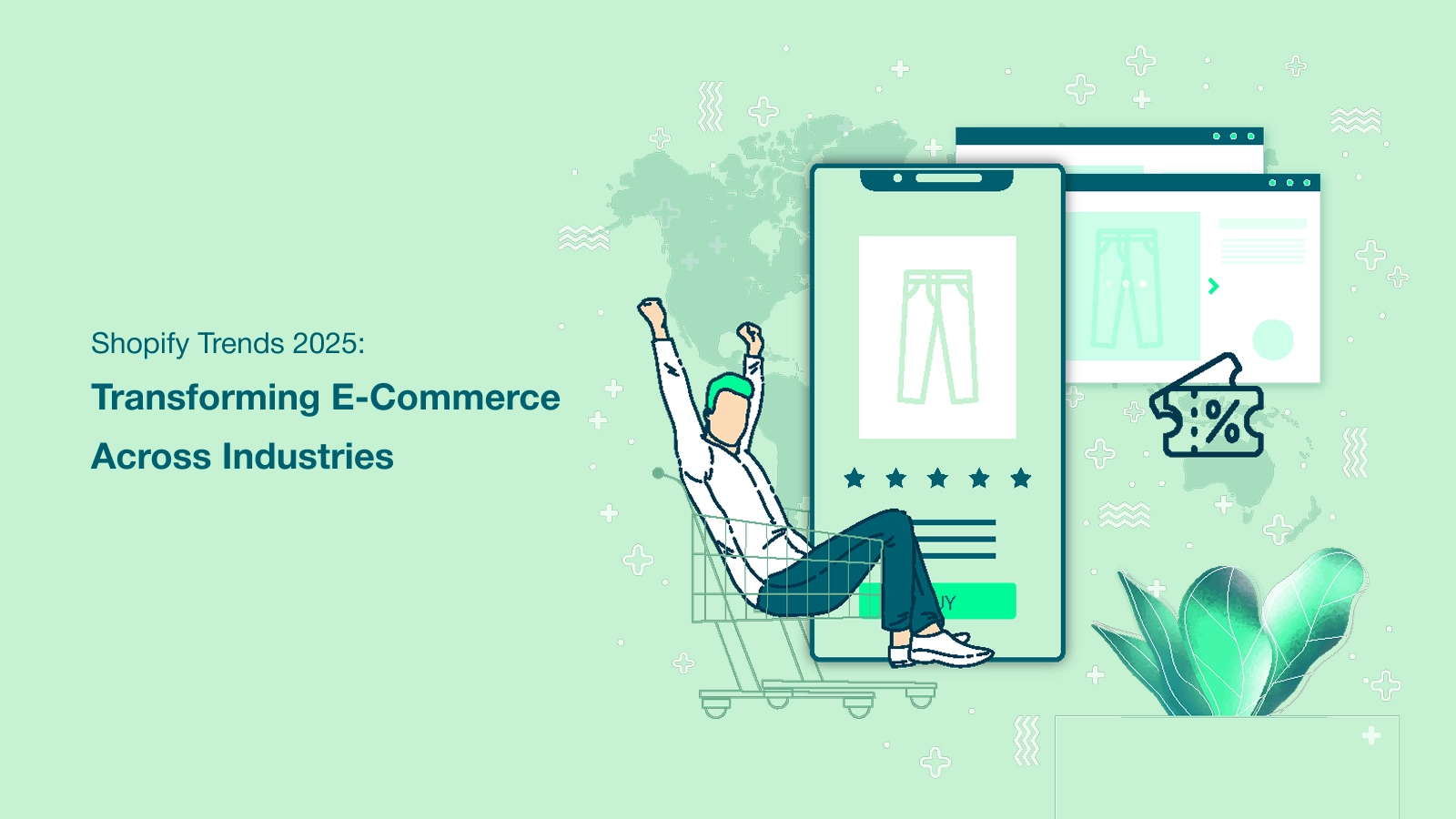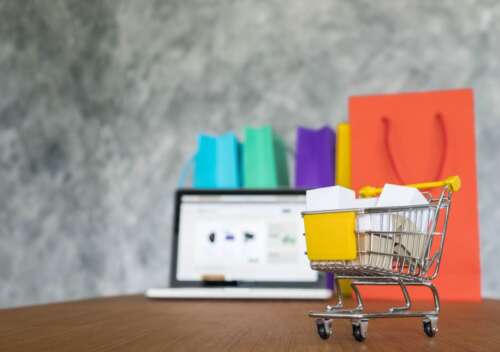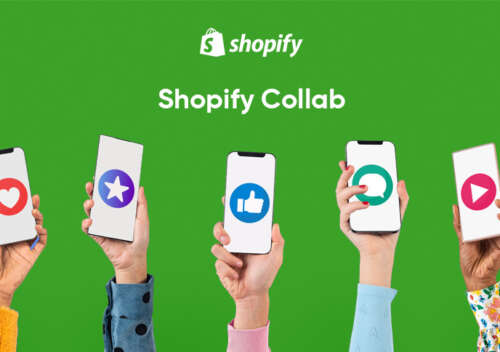Explaining all the latest Shopify trends that are going to redefine the year 2025 in e-commerce. Keep on reading to know more.
Shopify Trends 2025: Revolutionizing E-Commerce Across Industries
Shopify Trends 2025 are shaping the future of eCommerce, transforming how businesses engage with customers and optimize online sales. As technology evolves rapidly, brands that fail to adapt risk falling behind. Staying updated with the latest Shopify development trends ensures businesses remain competitive, enhance customer experience, and drive growth.
Customer experience is now the cornerstone of business success. Additionally, adaptability is crucial. This is especially true in the eCommerce domain, where change is the only constant. But how do these changes unfold, and how can brands stay informed?
This blog explores key Shopify Trends 2025, highlighting innovations like AI-driven personalization, mobile commerce, and sustainability. Before diving into the trends, let’s understand why staying updated is essential.
Why Staying Updated with Shopify Trends Matters?
Achieving success in business is directly proportional to keeping customers happy and updated about the industry and the trends. Therefore, if you are in Shopify development services business, you must know what’s trending in the community and otherwise. Here is a detailed preview of the trends that are currently making waves in Shopify ecosystem.
AI and Personalization
AI has become the talk of the town. Currently, in eCommerce industry and Shopify development services, it is revolutionizing the way personalization works for customers. AI-powered tools are helpful for analysing customer behaviour. Consumers crave personalized shopping experiences, yet growing privacy concerns are reshaping how businesses approach customization. AI is emerging as the key ingredient, enabling brands to craft tailored experiences while staying within legal boundaries.
Content and Commerce Going Together
Content and commerce are merging into a single, seamless experience—and it’s a bit overwhelming. Social media, streaming services, and even podcasts are transforming into digital marketplaces. From QR codes on live streams to shoppable ads on Instagram, TikTok, and YouTube, the trend is booming yet still evolving. Social platforms are becoming virtual malls, where brands showcase products in real time, and audiences can make instant purchases with just a click.
Consider your brand, product lineup, and audience—do these emerging sales channels align with your business? If your answer is “yes” or even “maybe,” it’s worth exploring. The advantage of new digital trends is their flexibility—there are no strict rules yet. This gives your Shopify development company the opportunity to experiment, move swiftly, and potentially outpace competitors in adopting these innovative shopping platforms. Just be ready to invest time and resources into A/B testing to discover what truly resonates with your audience.
The Option for Buy Now Pay Later
“Buy now, pay later” is no longer just a trend—it’s becoming essential for younger shoppers. With inflation still on the rise, payment flexibility is a must-have for many consumers. The ability to split payments over time can be the deciding factor between completing a purchase or abandoning it.
In 2024, half of all adults used BNPL, and the numbers continue to grow. Millennials and Gen Z, in particular, have embraced this option, with nearly 70% having tried it. Offering BNPL on your online store can help break down price barriers and drive more conversions, especially during peak shopping events like Black Friday and Cyber Monday.
Better Privacy Laws
Consumer privacy is taking centre stage in 2025 with Shopify development services. Navigating today’s fragmented regulatory landscape will be crucial for businesses looking to stay compliant.
So, what does evolving privacy really mean? In short, it’s about tighter regulations on how businesses collect and use consumer data. Third-party data is gradually disappearing due to stricter privacy laws, making it harder to access detailed, individual-level insights. Instead, data tools are shifting toward aggregated user groups, providing broader, legally compliant insights.
Mobile Commerce Growing
If you’re not optimizing for mobile, you’re already behind. Mobile commerce (m-commerce) is booming, accounting for 60% of global eCommerce sales. While mobile has long been the go-to device for browsing, it’s now a primary shopping tool—a game-changer for eCommerce businesses.
Younger generations are leading this shift. Gen Z, in particular, spends hours shopping directly from social feeds. To capture their attention, mobile brand apps, SMS campaigns, and seamless mobile experiences are essential. At the very least, your business needs a fast, reliable, and intuitive mobile checkout to stay competitive.
Personalized Push Notification
By 2025, personalized push notifications will become a major player in eCommerce, rivaling SMS and email as a top tool for customer retention. With conversion rates 7–10 times higher than email or SMS—and no per-send costs—push notifications offer a powerful, cost-effective way to re-engage customers and increase lifetime value.
When paired with smart customer segmentation based on factors like purchase history, demographics, or loyalty tiers, their impact grows even stronger. This allows brands to deliver highly relevant, personalized messages that resonate with their audience and drive deeper engagement.
Sustainable Shopping, Branded Resale
According to Shopify Trends 2025, sustainability is a key factor in consumer decision-making. Eco-conscious shoppers are gravitating toward brands that prioritize the planet. Branded resale has emerged as a powerful retention strategy, keeping customers engaged within a brand’s ecosystem while meeting the demand for both sustainability and affordability. This isn’t just a passing trend—it’s reshaping the customer journey.
The numbers speak for themselves: the secondhand market is projected to reach $74 billion by 2028, outpacing the broader retail sector. For brands, this presents a major opportunity to boost loyalty by offering resale options that keep customers from turning to third-party marketplaces. Branded resale platforms create a win-win by providing budget-friendly, responsible shopping choices while fostering long-term customer engagement.
More Pinterest Trends
With 537 million active users, Pinterest is an often-overlooked platform for lead generation and sales. Many users turn to it as a visual search engine for inspiration—and with recent updates, it’s becoming a powerful shopping destination as well.
While you’ve been focused on your online store, Pinterest has been busy upgrading its signature pins. Introducing: Rich Product Pins. These enhanced pins automatically sync key details from your website, such as pricing and shipping information, ensuring your content stays up to date. Every time you update your site, your pins refresh too, keeping them relevant and engaging for potential buyers.
In Conclusion
2025 is set to be a dynamic year for eCommerce and for companies in Shopify development services. This is filled with both opportunities and challenges. From navigating stricter privacy laws and tapping into emerging platforms like Pinterest to harnessing AI-driven personalization and integrating BNPL solutions, there are countless ways for brands to innovate and stay ahead.
As consumer behaviour shifts and technology evolves—thankfully in sync—staying agile and proactive will be crucial for online businesses. With AI now a permanent force in the industry, the future of eCommerce is more exciting than ever, and we can’t wait to see how it unfolds.






